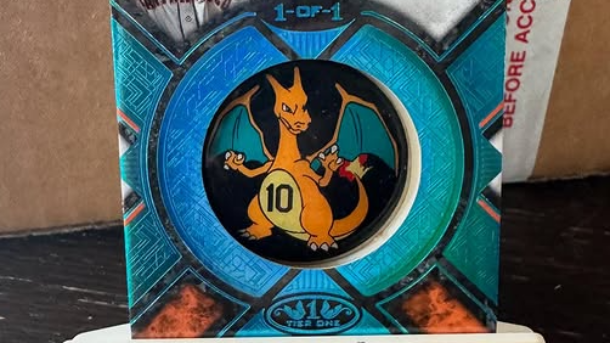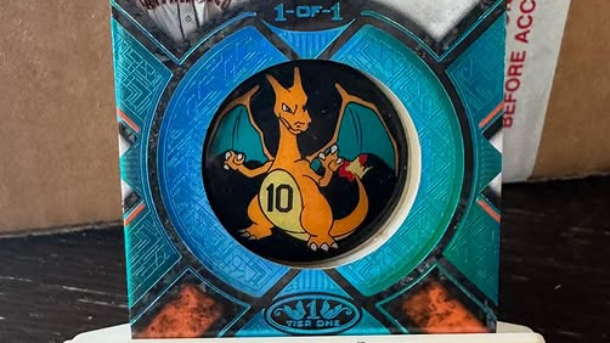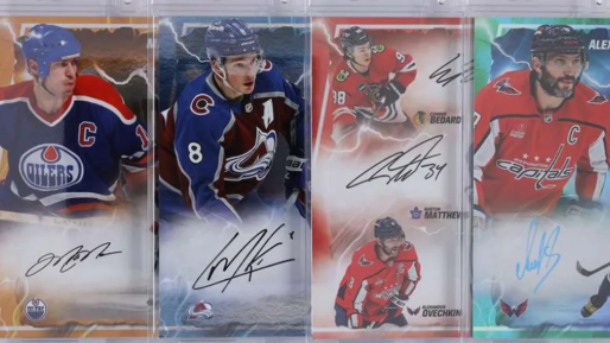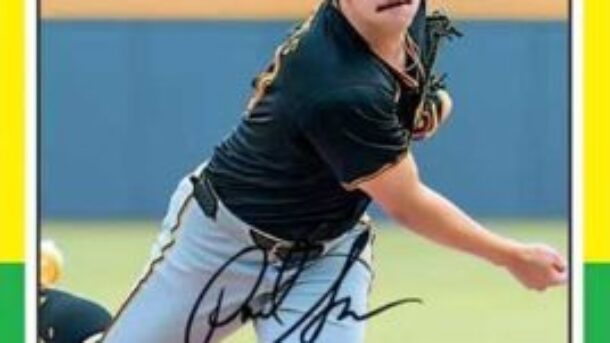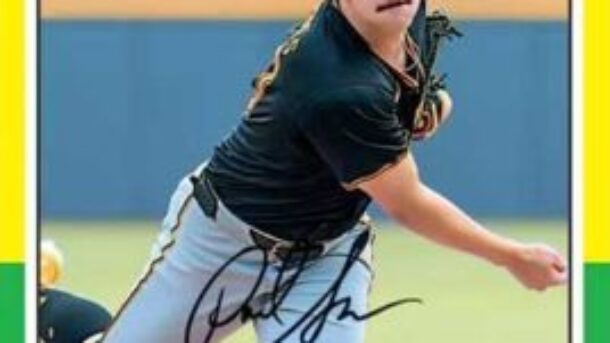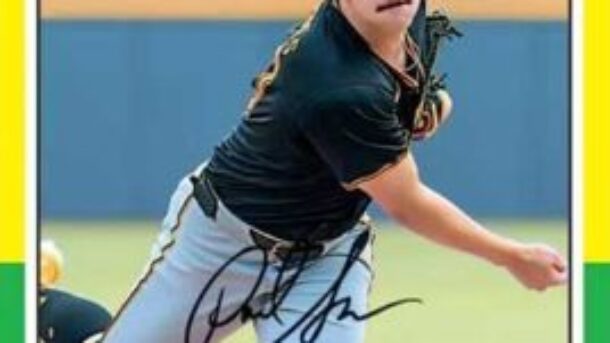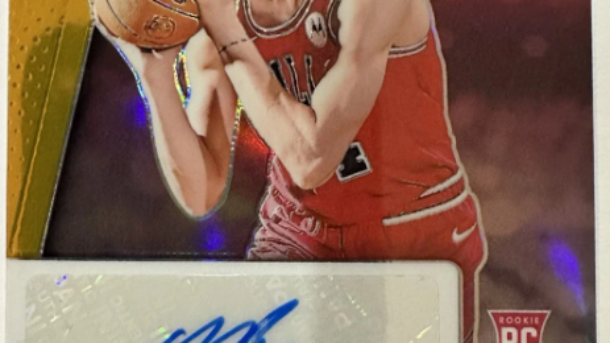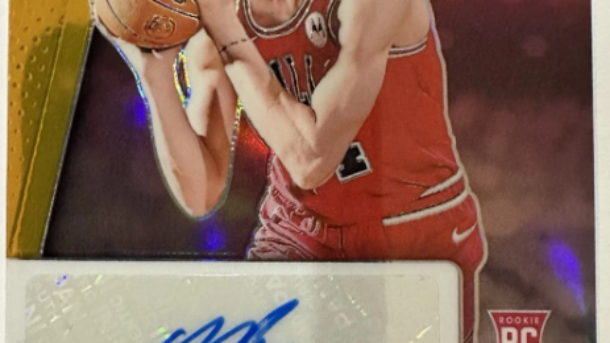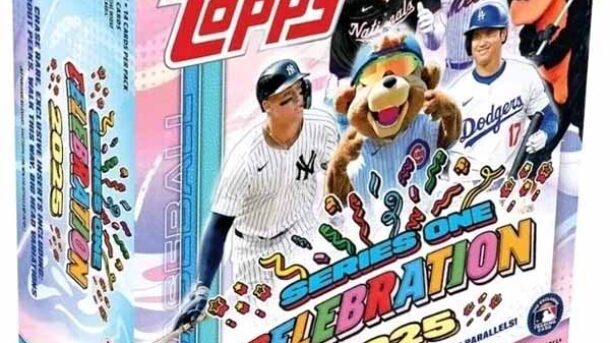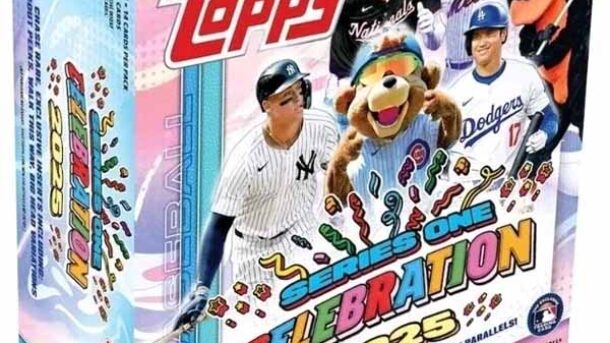In a world where sports and trading cards have always held their own distinct places, a single card strikes like lightning. It’s the surprising crossover no one saw coming: a collectible that unites Major League Baseball and Pokémon in an extraordinary twist of fate. This unique piece of memorabilia, touched by the iconic flames of Charizard, is setting the collecting communities ablaze with excitement and a palpable sense of adventure akin to the thrill of catching that elusive rare Pokémon.
MLB star Evan Longoria, well-acquainted with the realm of collectibles thanks to his prolific signing activities, teased collectors this week with an unprecedented card heading for the 2025 Topps Tier One Baseball set. At the heart of this frenzy is not just any card but one embedded with a game-used bat knob—a rare collectible by any standard. But what catapulted it into must-have territory? The addition of a blazing Charizard, dragons and baseballs merging in a way that ignites passions across genres.
The world of collecting had been waiting, unknowingly, for this kind of cross-pollination. Longoria’s card, a nexus of Pokémon and Major League Baseball, is not just a collectible piece; it’s a cultural artifact marking the convergence between two major hobbies. The announcement came at a perfect time—a period when Pokémon card mania is still on a high, and baseball fans are eagerly gearing up for another engaging season. This serendipitous creation was met with open arms and eager wallets.
One standout in this whirlwind of excitement is Alan Narz of Big League Cards, Casselberry, Florida. In his world, a card that bridges the divide between sports and Pokémon is like the Holy Grail with a holographic finish. Narz eagerly put forth a $100,000 offer, recognizing not only the card’s financial value but its potential role as a unifying icon in the diverse world of card collecting. “We’re all about being the top spot for sports and Pokémon,” Narz declared, his ambition as tangible as the card’s rarity. “Now this card shows up that’s basically the perfect blend of both? We need it.”
Narz’s move is not just speculation—it’s a calculated leap at potentially owning the first licensed MLB card with any form of Pokémon integration. Topps and Pokémon, two powerhouses on their own, have flirted with the idea of combining efforts before. However, this Charizard-bedded relic is breaking new ground.
Bat knob cards alone carry immense appeal. They’re relics of strength and prowess, pieces of wood that encapsulate the crack of the bat and the thud of a home run, all nestled within a tangible piece of history. When that wood is kissed by the flames of Charizard, things only get hotter.
Social media, the arena where modern collecting battles are fought and celebrated, erupted when this mythical card was posted. Among the ripple effects was the quick purchase of a Longoria bat flaunting the same vintage Charizard sticker, snagged for a now seemingly modest $700 on eBay. Doug Caskey, co-founder of Mojobreak, claimed this prize, successfully merging fandom with financial acumen. For Caskey, the allure is dual-pronged; it’s about the intriguing fusion card itself and a deeper link to Longoria that dates back to Mojobreak’s roots.
The elusive chase of Longoria’s 2006 Bowman Chrome Superfractor has been a running theme since the card’s nonappearance in the market. Similarly, the hunt for the Charizard bat knob card adds another thrilling chapter to the hobby. “It’s the thrill of the chase,” Caskey mused, embodying the endless drive of collectors and hunters alike. “This card—it’s something else. Hunting that down? That’s what the hobby is all about.”
Who can say where the card will finally rest? The journey from teaser on social media to a display among reverent fans is a legend in motion. In some ways, it doesn’t matter if it finds a home in Narz’s Florida haven, Caskey’s Bay Area collector’s paradise, or somewhere else entirely. Its existence alone empowers the dreamers and the believers, symbolizing more than just the mingling of sports and TCG—it’s a testament to the magical possibilities that always lie ahead in every unturned card.

